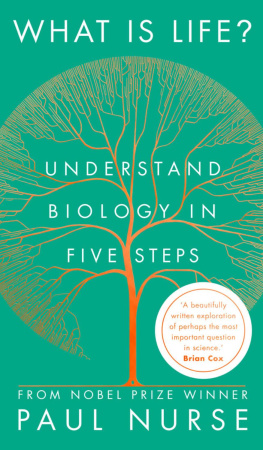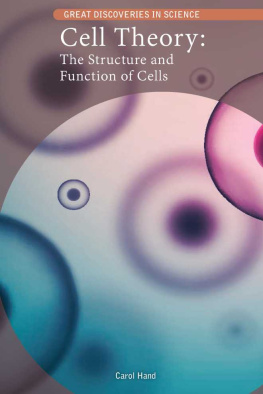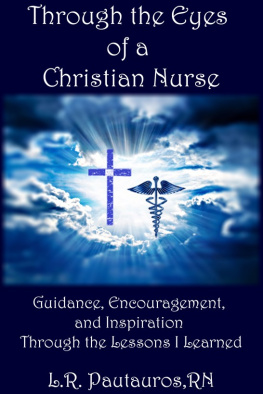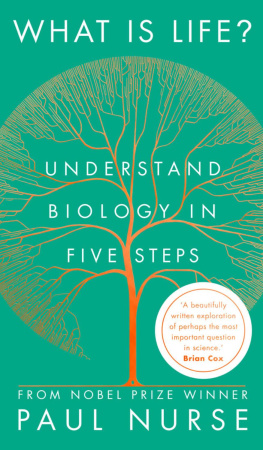Contents
Guide
Page List

Text copyright 2020 by Paul Nurse
First American Edition 2021
First published in Great Britain in 2020 by David
Fickling Books under the title What is Life?:
Understand Biology in Five Steps
All rights reserved
For information about permission to reproduce selections from this book, write to Permissions, W. W. Norton & Company, Inc., 500 Fifth Avenue, New York, NY 10110
For information about special discounts for bulk purchases, please contact W. W. Norton Special Sales at specialsales@wwnorton.com or 800-233-4830
Jacket design: Sarahmay Wilkinson
Jacket photograph: Bridgeman Images
Production manager: Anna Oler
The Library of Congress has cataloged the printed edition as follows:
Names: Nurse, Paul, 1949 author.
Title: What is life? : five great ideas in biology / Paul Nurse.
Description: First American edition. | New York, NY : W.W. Norton & Company, 2021.
Identifiers: LCCN 2020034207 | ISBN 9780393541151 (hardcover) | ISBN 9780393541168 (epub)
Subjects: LCSH: BiologyPhilosophy. | Life (Biology)
Classification: LCC QH331 .N87 2021 | DDC 570.1dc23
LC record available at https://lccn.loc.gov/2020034207
W. W. Norton & Company, Inc., 500 Fifth Avenue, New York, N.Y. 10110
www.wwnorton.com
W. W. Norton & Company Ltd., 15 Carlisle Street, London W1D 3BS
To Andy Martynoga (Yog), friend and father
and my grandchildren:
Zoe, Joseph, Owen and Joshua
and their generation
who will need to care for Life on our planet
CONTENTS
It may have been a butterfly that first started me thinking seriously about biology. It was early spring; I was perhaps twelve or thirteen years old and sitting in the garden when a quivering yellow butterfly flew over the fence. It turned, hovered and briefly settled just long enough for me to notice the elaborate veins and spots on its wings. Then a shadow disturbed it and it took flight again, disappearing over the opposite fence. That intricate, perfectly formed butterfly made me think. It was both utterly different to me and yet somehow familiar too. Like me, it was so obviously alive: it could move, it could sense, it could respond, it seemed so full of purpose. I found myself wondering: what does it really mean to be alive? In short, what is life?
I have been thinking about this question for much of my life, but finding a satisfactory answer is not easy. Perhaps surprisingly, there is no standard definition of life, although scientists have wrestled with this question across the ages. Even the title of this book, What Is Life?, has been shamelessly stolen from a physicist, Erwin Schrdinger, who published an influential book of the same name in 1944. His main focus was on one important aspect of life: how living things maintained such impressive order and uniformity for generation after generation in a universe that is, according to the Second Law of Thermodynamics, constantly moving towards a state of disorder and chaos. Schrdinger quite rightly saw this as a big question, and he believed that understanding inheritance that is what genes are and how they are passed on faithfully between generations was key.
In this book I ask the same question What is life? but I do not think that only deciphering inheritance will give us a complete answer. Instead I will consider five of biologys great ideas, using them as steps that we can climb, one at a time, to get a clearer view of how life works. These ideas have mostly been around for some time, and are generally well accepted for explaining how living organisms function. But I will draw these different ideas together in new ways, and use them to develop a set of unifying principles that define life. Hopefully they will help you see the living world through fresh eyes.
I should say, right at the start, that we biologists often shy away from talking about great ideas and grand theories. In this respect we are rather different from physicists. We sometimes give the impression that we are more comfortable immersing ourselves in details, catalogues and descriptions, whether thats listing all the species in a particular habitat, counting the hairs on a beetles leg, or sequencing thousands of genes. Perhaps it is natures bewildering, even overwhelming, diversity that makes it seem hard to seek out simple theories and unifying ideas. But important overarching ideas of this kind do exist in biology, and they help us make sense of life in all its complexity.
The five ideas I will explain to you are: The Cell, The Gene, Evolution by Natural Selection, Life as Chemistry and Life as Information. As well as explaining where they came from, why they are important, and how they interact, I want to show you that they are still changing and being further developed today, as scientists all over the world make new discoveries. I also want to give you a taste of what its like to be engaged in scientific discovery, so I will introduce you to the scientists who made these advances, some of whom I knew personally. I will also tell you stories of my own experiences of doing research in the laboratory, the lab, including the hunches, the frustrations, the luck and the rare but wonderful moments of genuinely new insight. My aim is for you to share in the thrill of scientific discovery and to experience the satisfaction that comes through a growing understanding of the natural world.
Human activity is pushing our climate and many of the ecosystems it supports to the edges of or even beyond what they can bear. To maintain life as we know it, we are going to need all the insights we can get from studying the living world. That is why in the years and decades ahead, biology will increasingly steer the choices we make about how people live, are born, fed, healed and protected from pandemics. I will describe some of the applications of biological knowledge and the difficult trade-offs, ethical uncertainties and the possible unintended consequences that they can give rise to. But before we can join the growing debates that surround these topics, we first need to ask what life is and how it functions.
We live in a vast and awe-inspiring universe, but the life that thrives right here in our tiny corner of that greater whole is one of its most fascinating and mysterious parts. The five ideas in this book will act like steps that we will move up, progressively revealing principles that define life on Earth. This will also help us think about how life on our planet might have first got started and what life might be like should we ever encounter it elsewhere in the universe. Whatever your starting point even if you think that you know little or nothing about science by the time you have finished this book, my goal is for you to have a better sense of how you, me, that delicate yellow butterfly and all other living things on our planet are connected.
It is my hope that, together, we will be closer to understanding what life is.

I saw my first cell when I was at school, not long after my encounter with the yellow butterfly. My class had germinated onion seedlings and squashed their roots under a microscope slide to see what they were made from. My inspirational biology teacher, Keith Neal, explained that we would see cells, the basic unit of life. And there they were: neat arrays of box-like cells, all stacked up in orderly columns. How impressive it seemed that the growth and division of those tiny cells were enough to push the roots of an onion down through the soil, to provide the growing plant with water, nutrients and anchorage.












